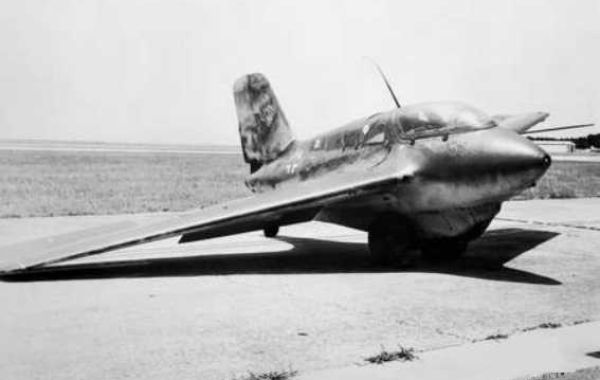Learn about the Me 163, a rocket-powered fighter plane used by the Germans in World War II. Despite its speed, the plane had significant drawbacks that led to the dissolution of pilots. Discover the history of this unique aircraft on PlaneHistoria.
The Messerschmitt Me 163 Komet was one of the most radical combat aircraft to see service with any nation during World War Two. This tiny, tailless, rocket-powered aircraft was faster than anything else in the sky.
It was principally intended as a point-defence fighter to combat the US daylight bombing campaign over Germany and in service, it proved to have both advantages and some major drawbacks.
The Me 163 was capable of a top speed of over 600mph, making it considerably faster than any other contemporary aircraft. But it had an endurance of only around six minutes. It also trialled some very effective new weapon systems and it proved extremely lethal, but mainly to those who flew and serviced it.
This Nazi wonder weapon is believed to have killed and injured more German pilots and ground crew than enemies. This is the bizarre story of the world’s first and only rocket interceptor.
Origins of the Komet
Although it ended up being built in the Messerschmitt factory in Augsburg, the design of this aircraft owned nothing to Willy Messerschmitt. Instead, it was the product of an eccentric genius, Alexander Lippisch.
Lippisch served as a photographer and aerial mapper in the Zeppelin Company where he worked as a designer and engineer. However, his real interest lay in the design of radical gliders.
After World War One, Germany was banned from possessing military aircraft under the terms of the Versailles treaty. However, the sport of gliding was unaffected by this ban and in the 1920s and 1930s Germany took the lead in the design and building of advanced gliders. None were more radical than those developed by Lippisch.
Lippisch would design more than 50 gliders. While a few early designs were conventional, he rapidly began to explore different configurations.
The Ente (duck) was a tail-first canard design. By chance, Fritz von Opel (better known as “Rocket Fritz”) of the Opel company saw the one and only Ente flying in the late 1920s in the Rhön Mountains.
Click here to know more about Me 163.








